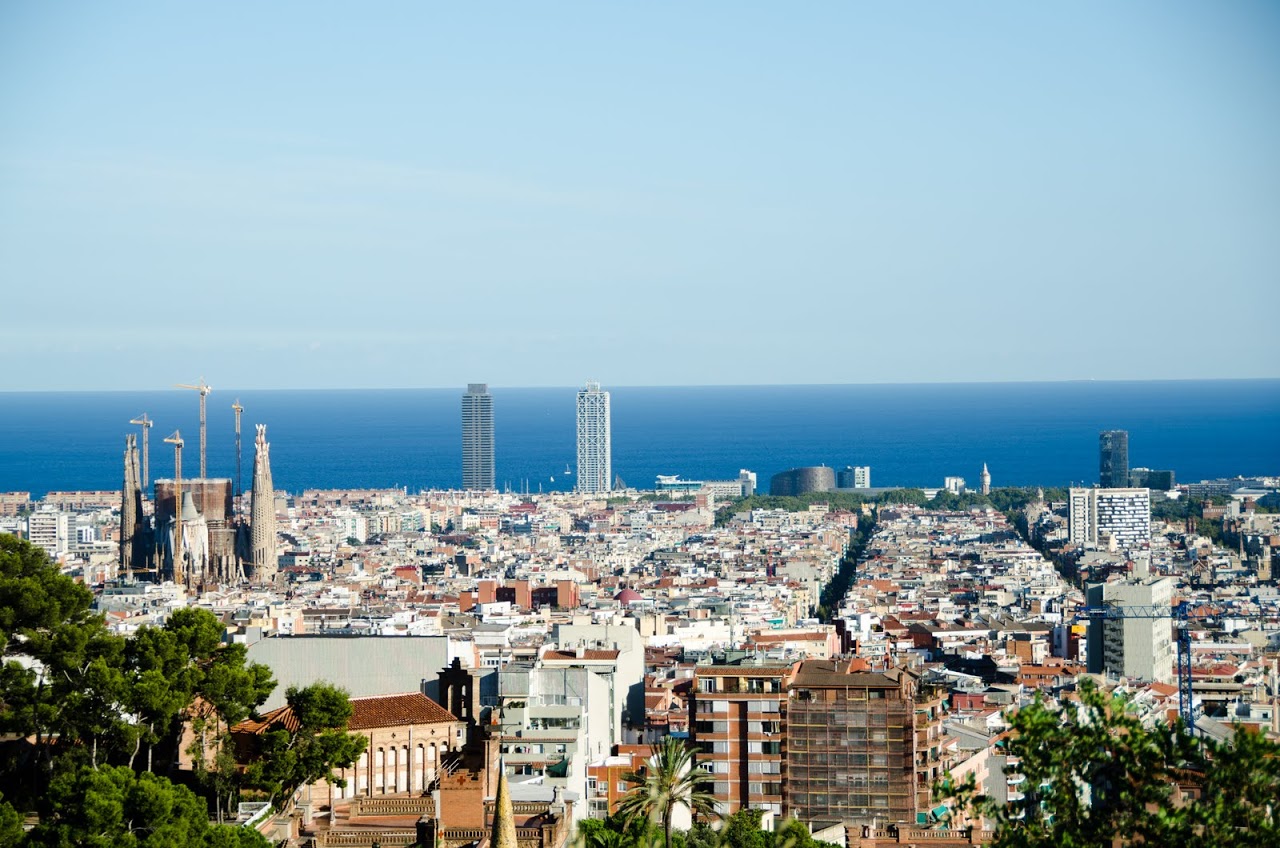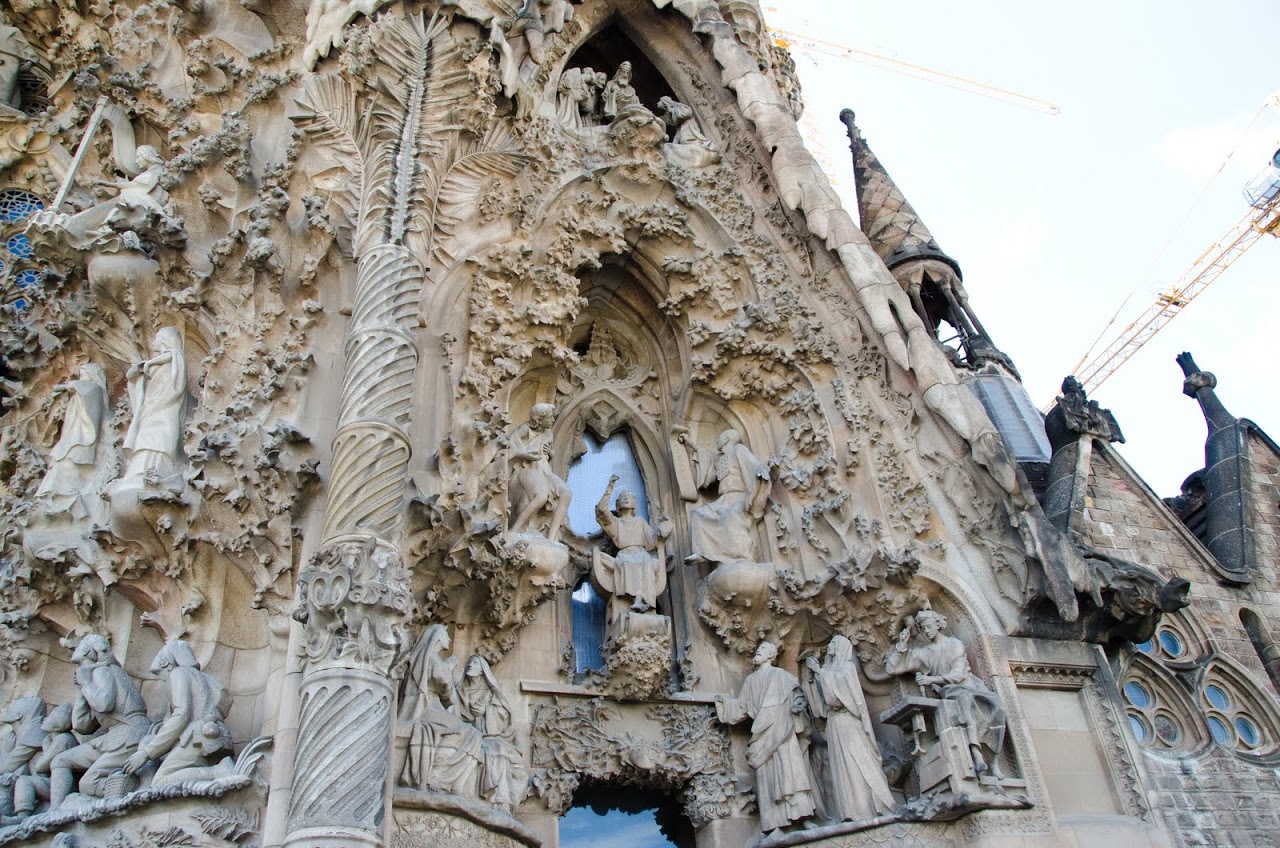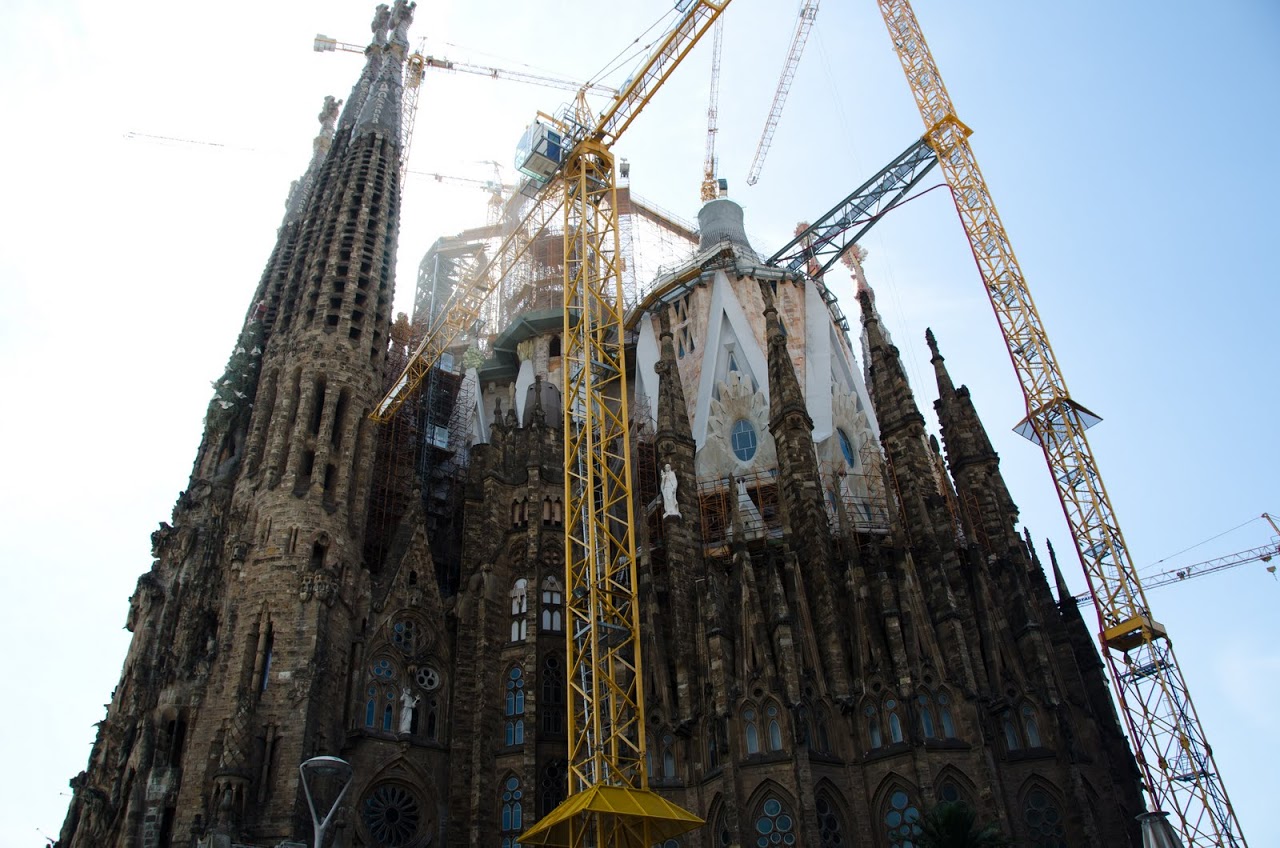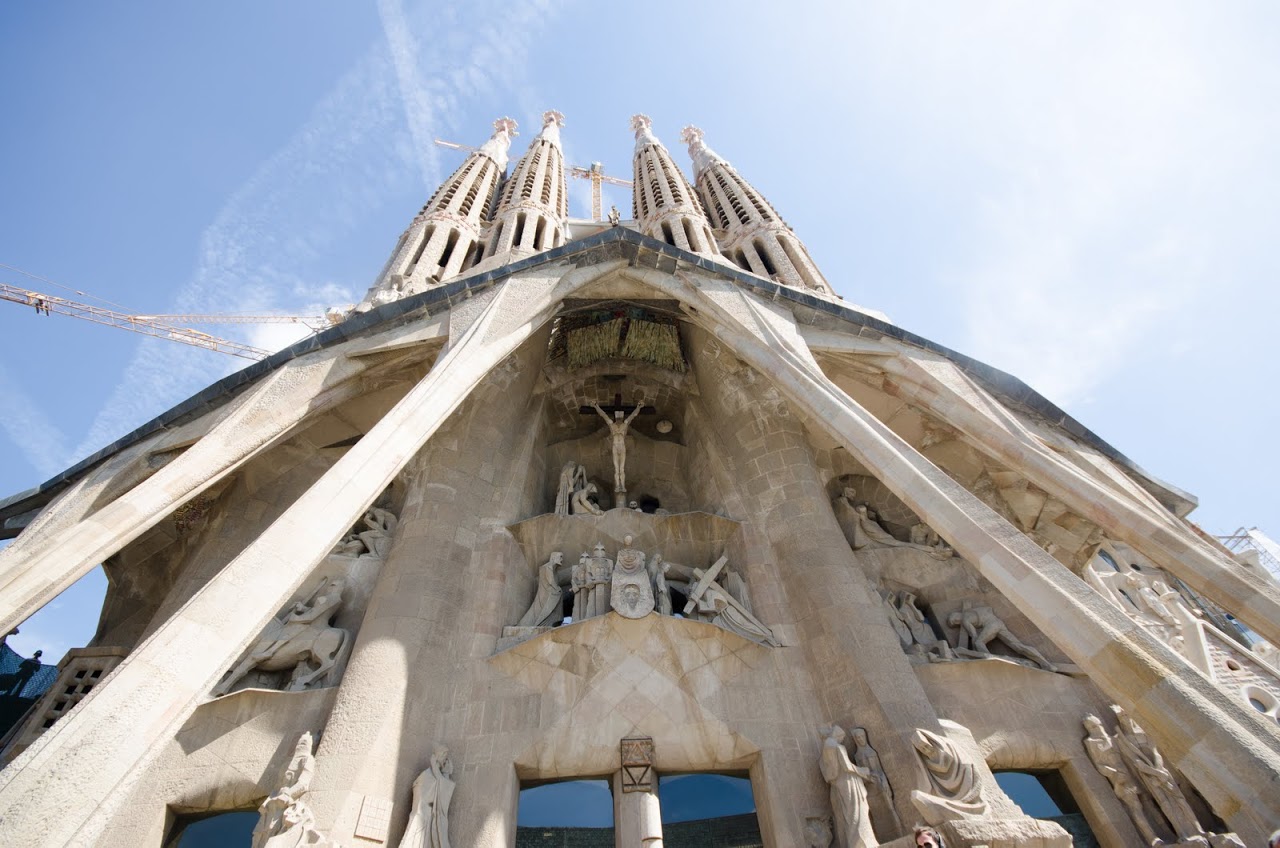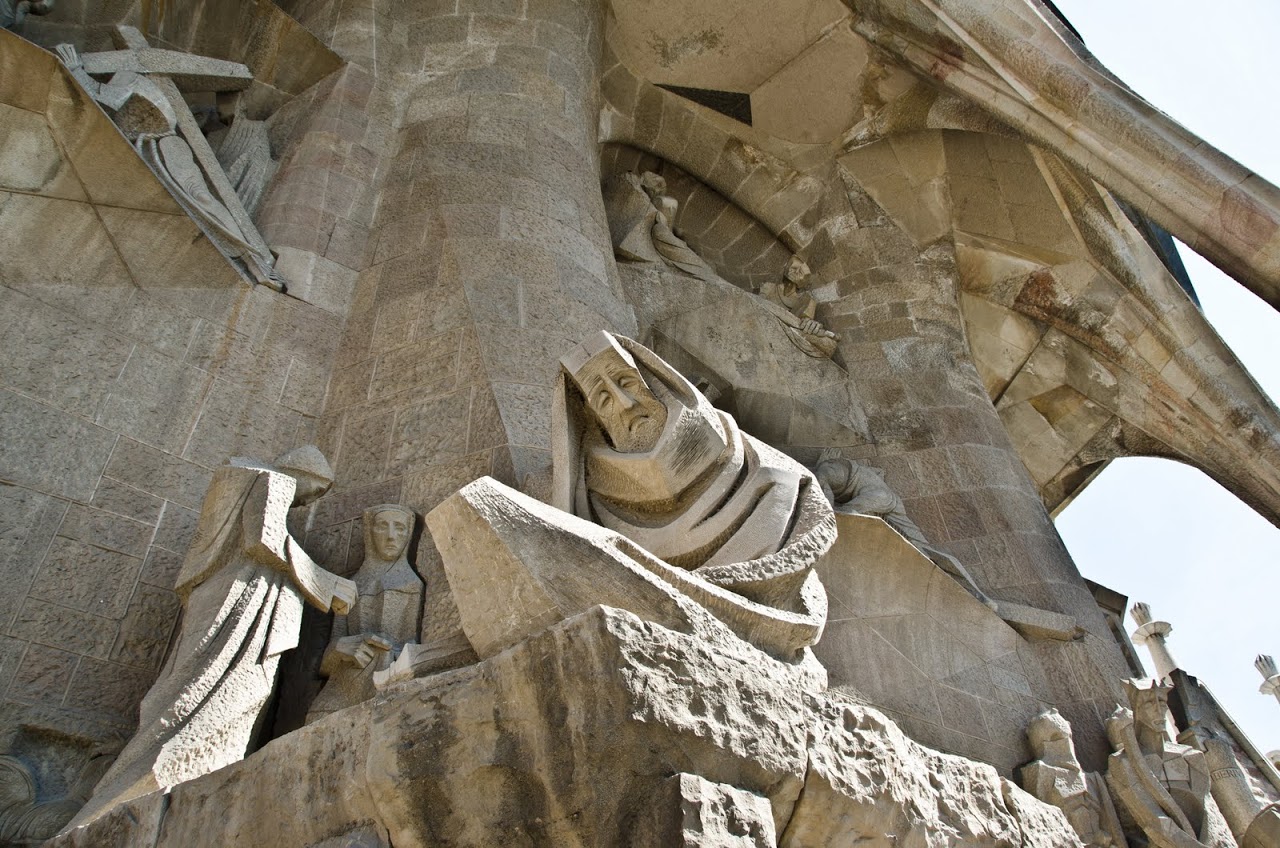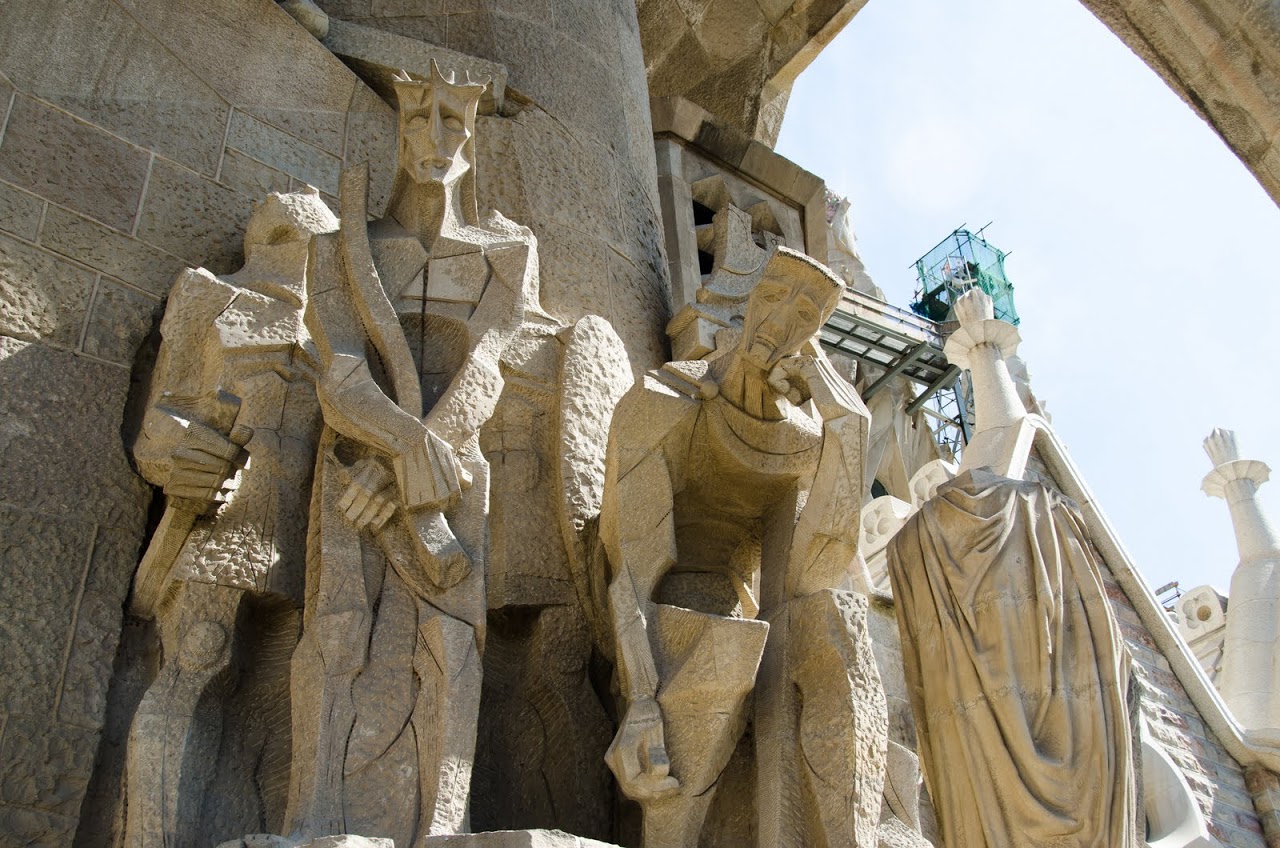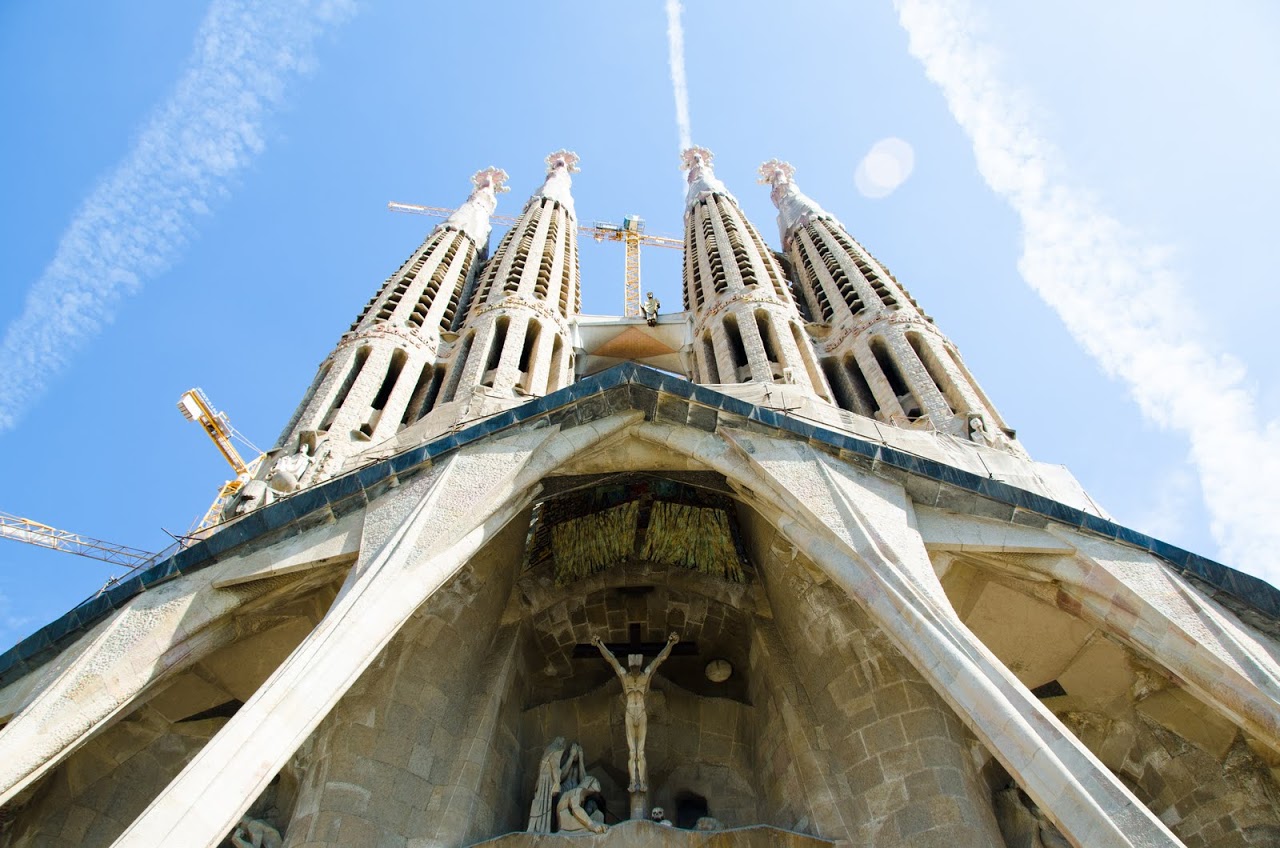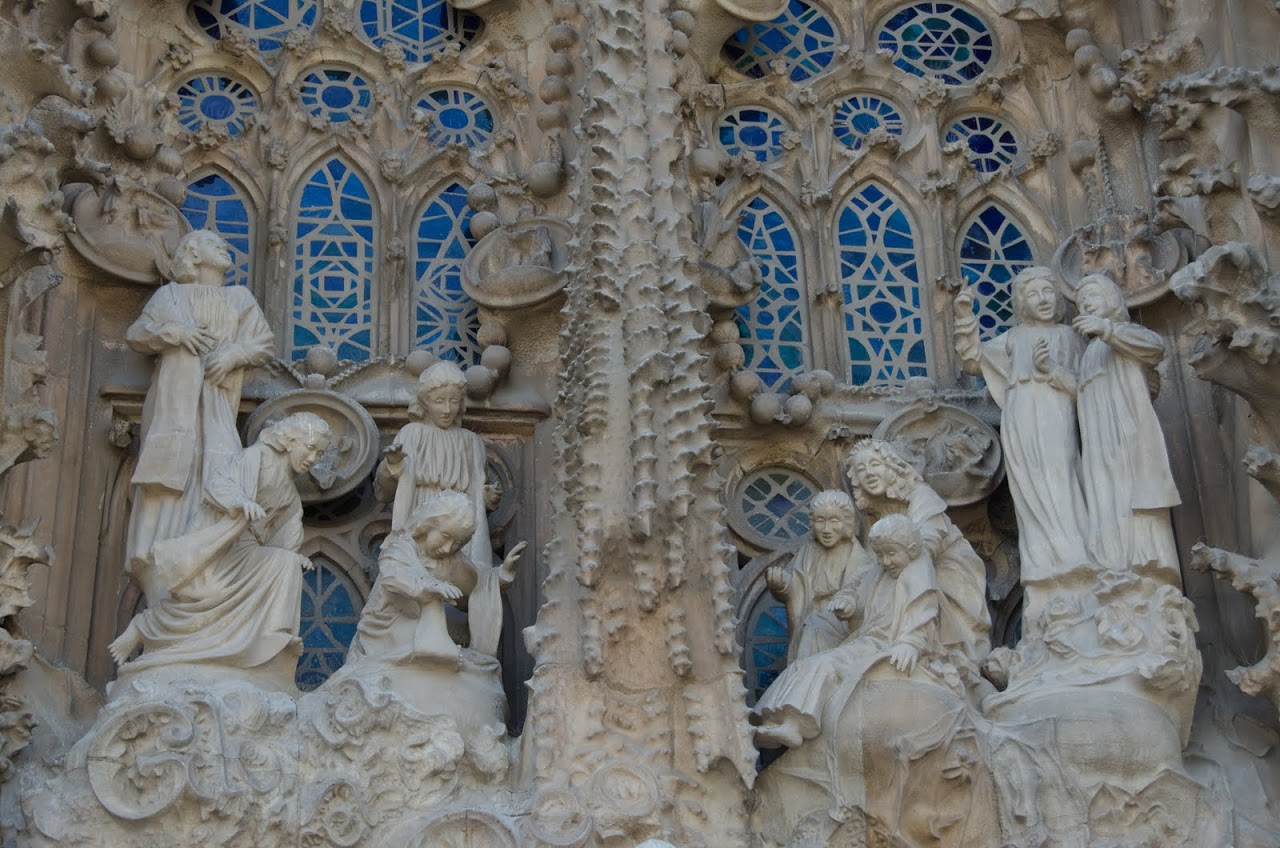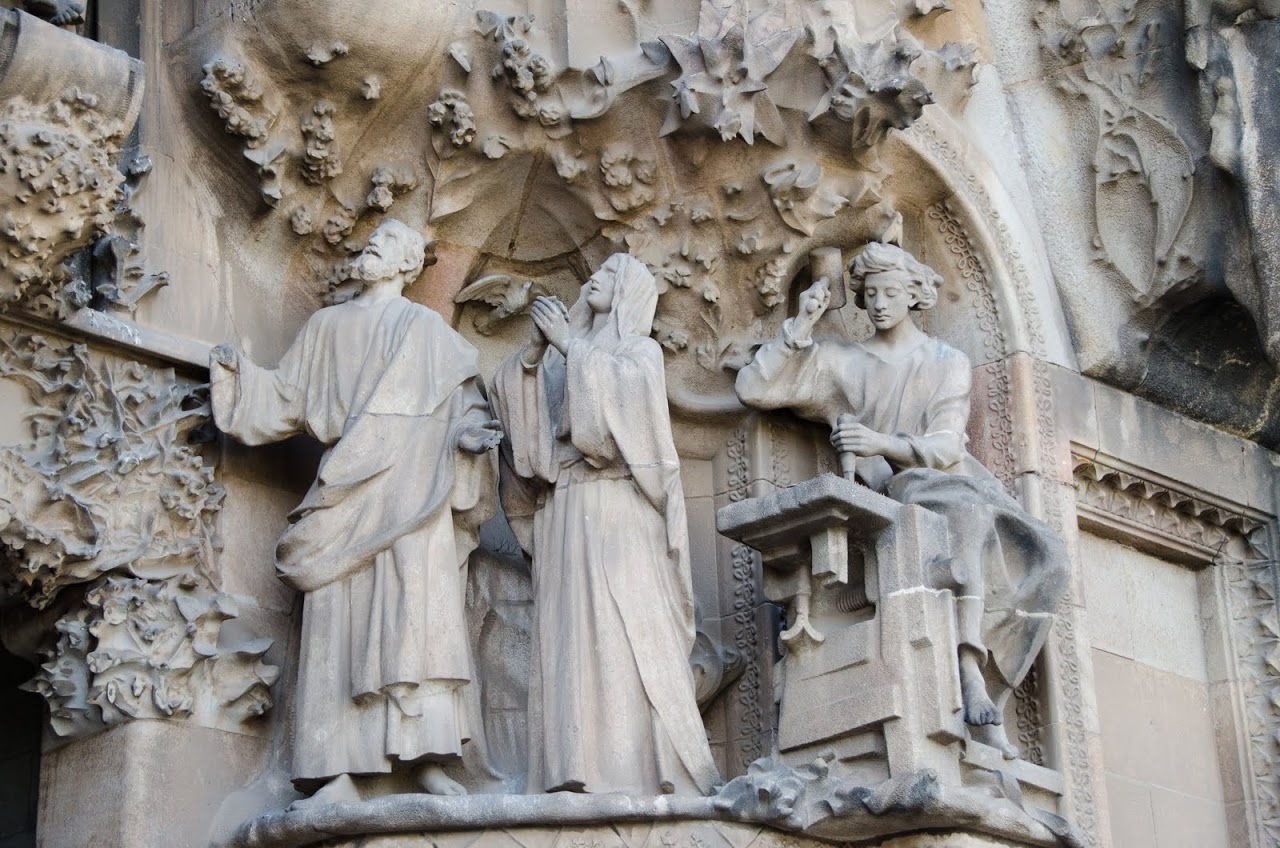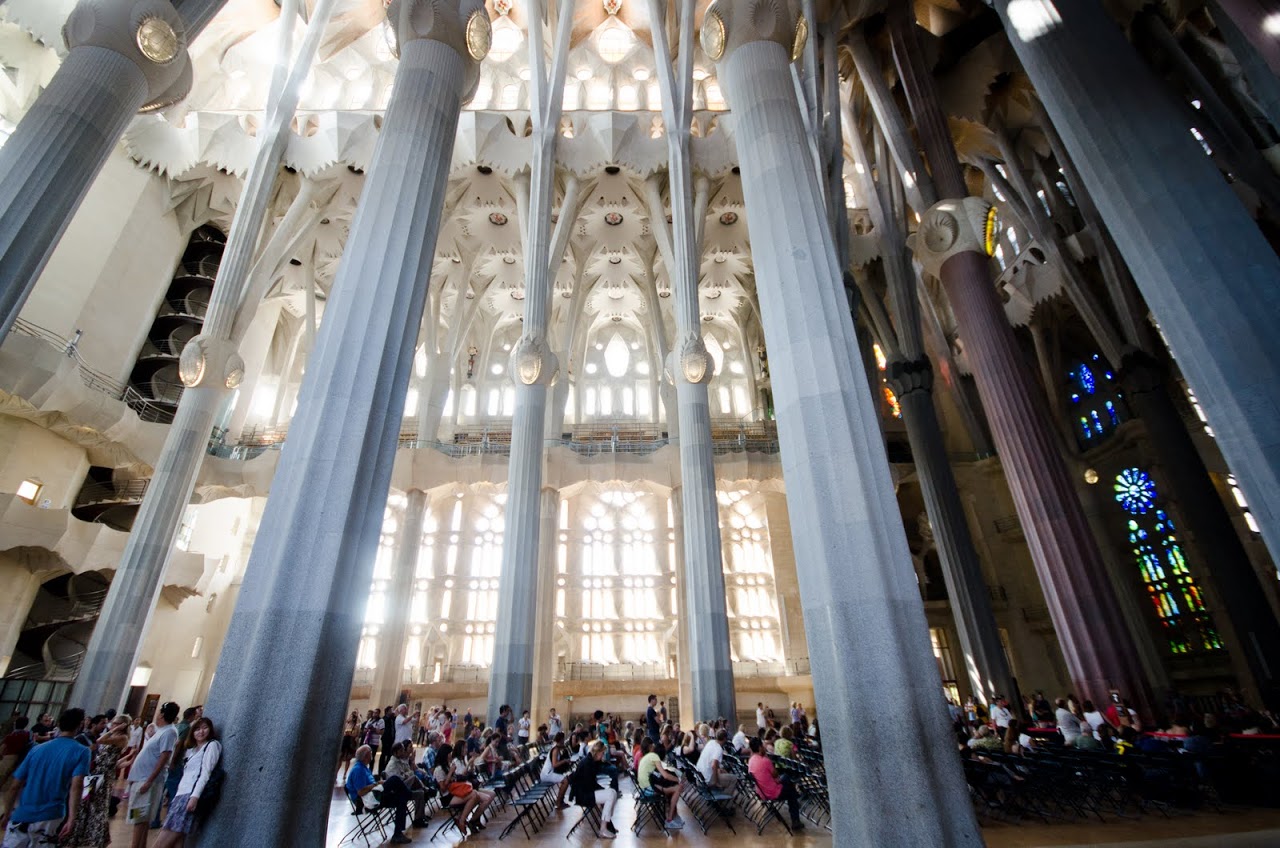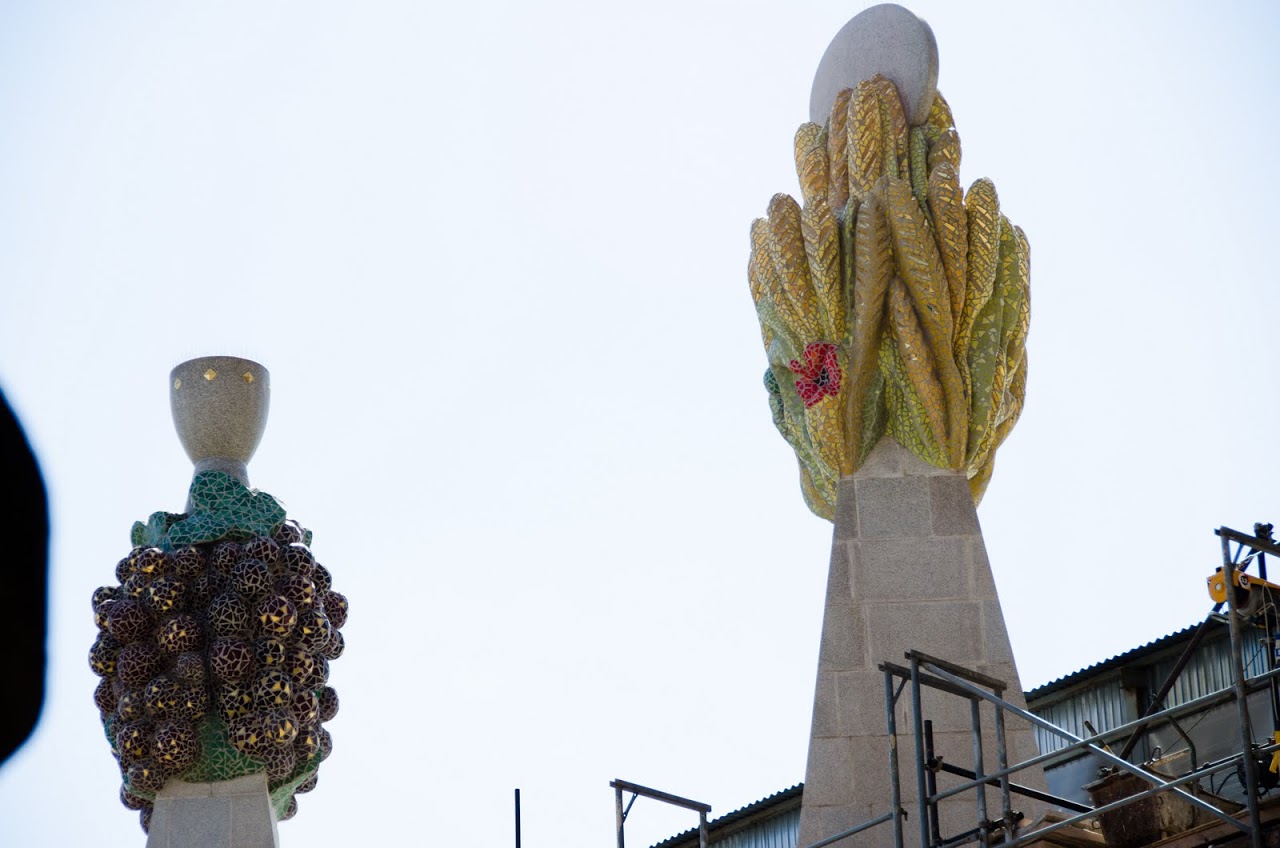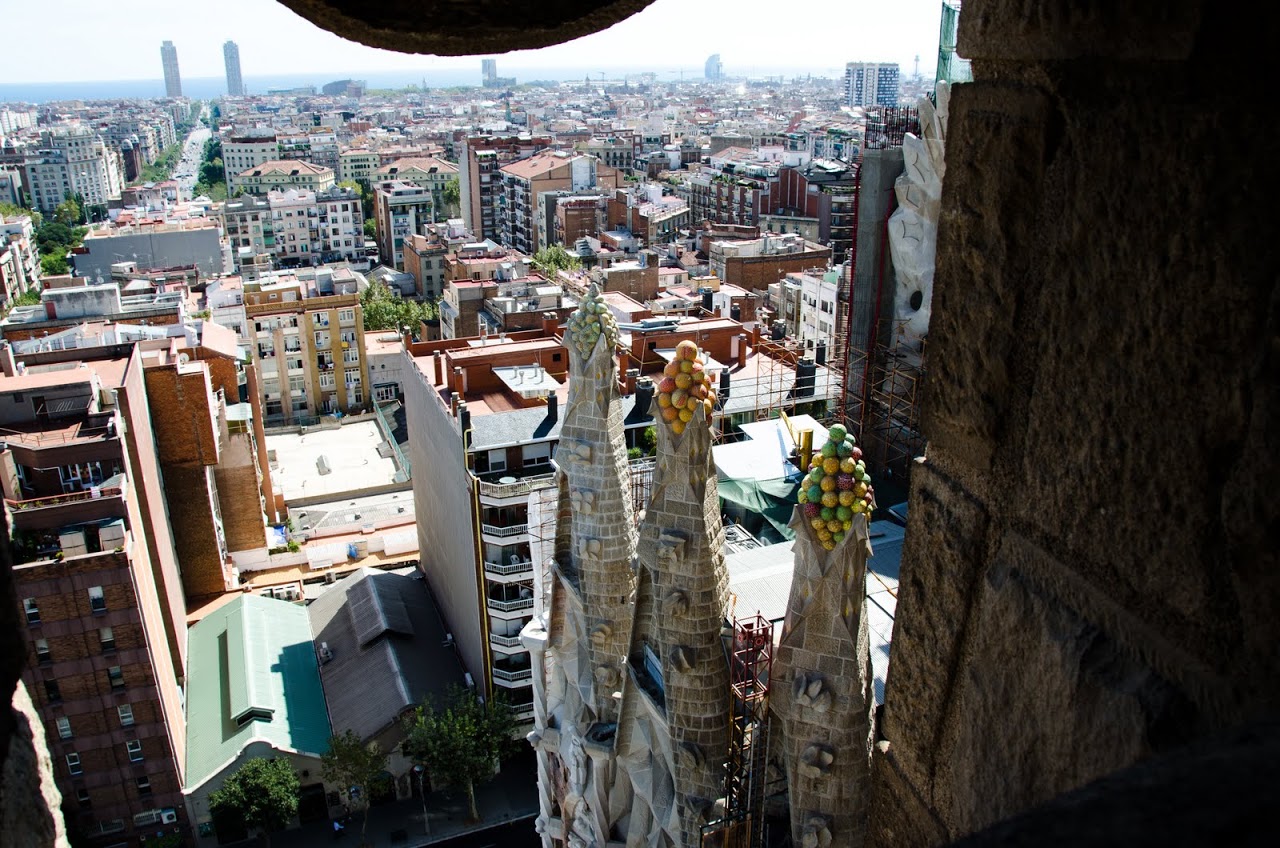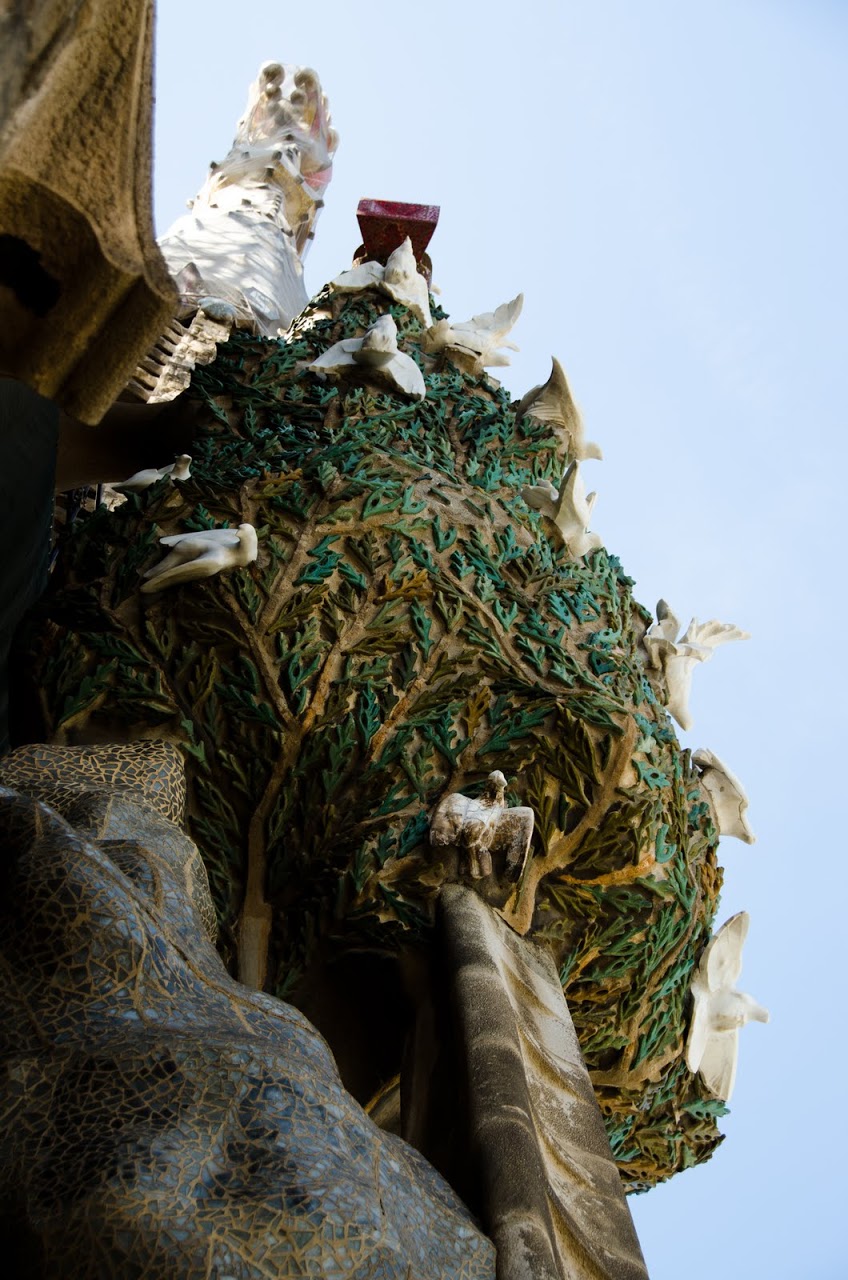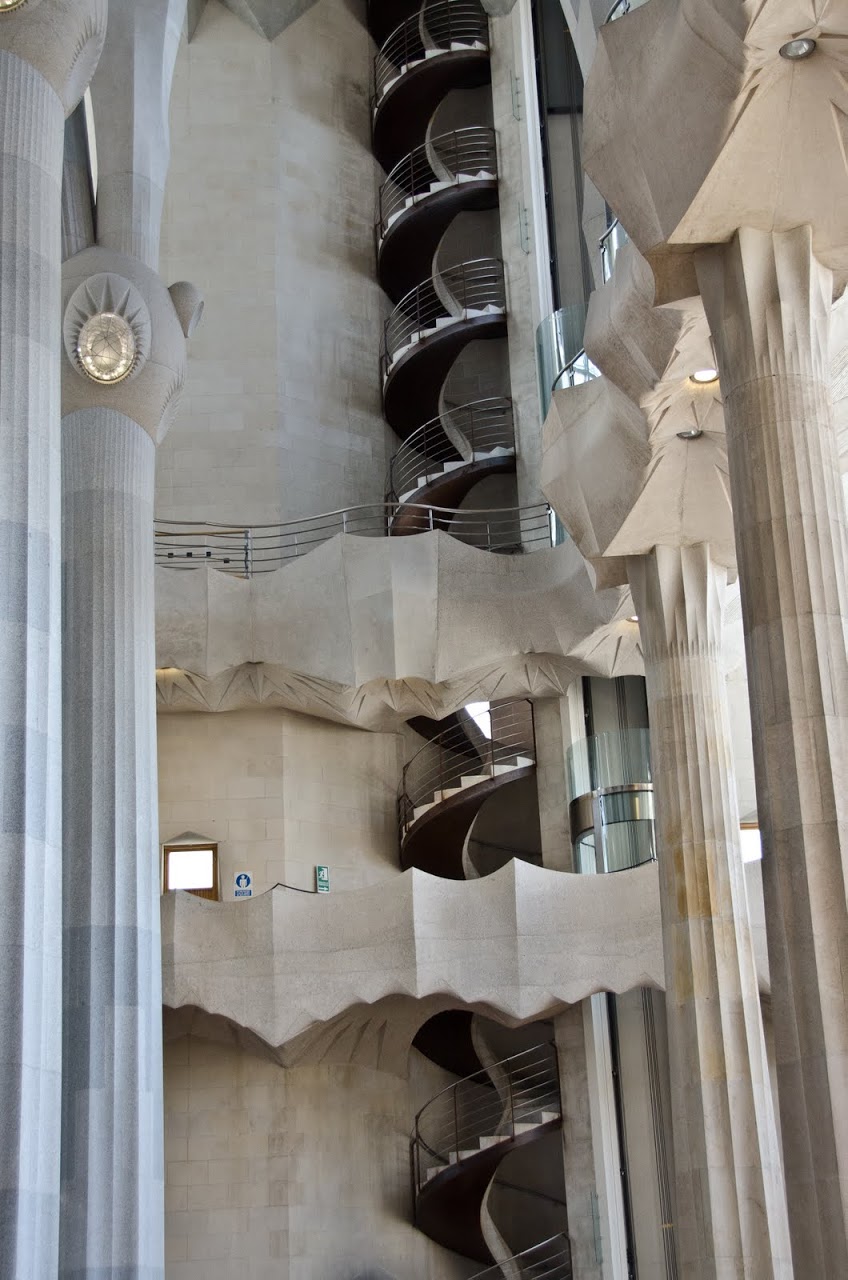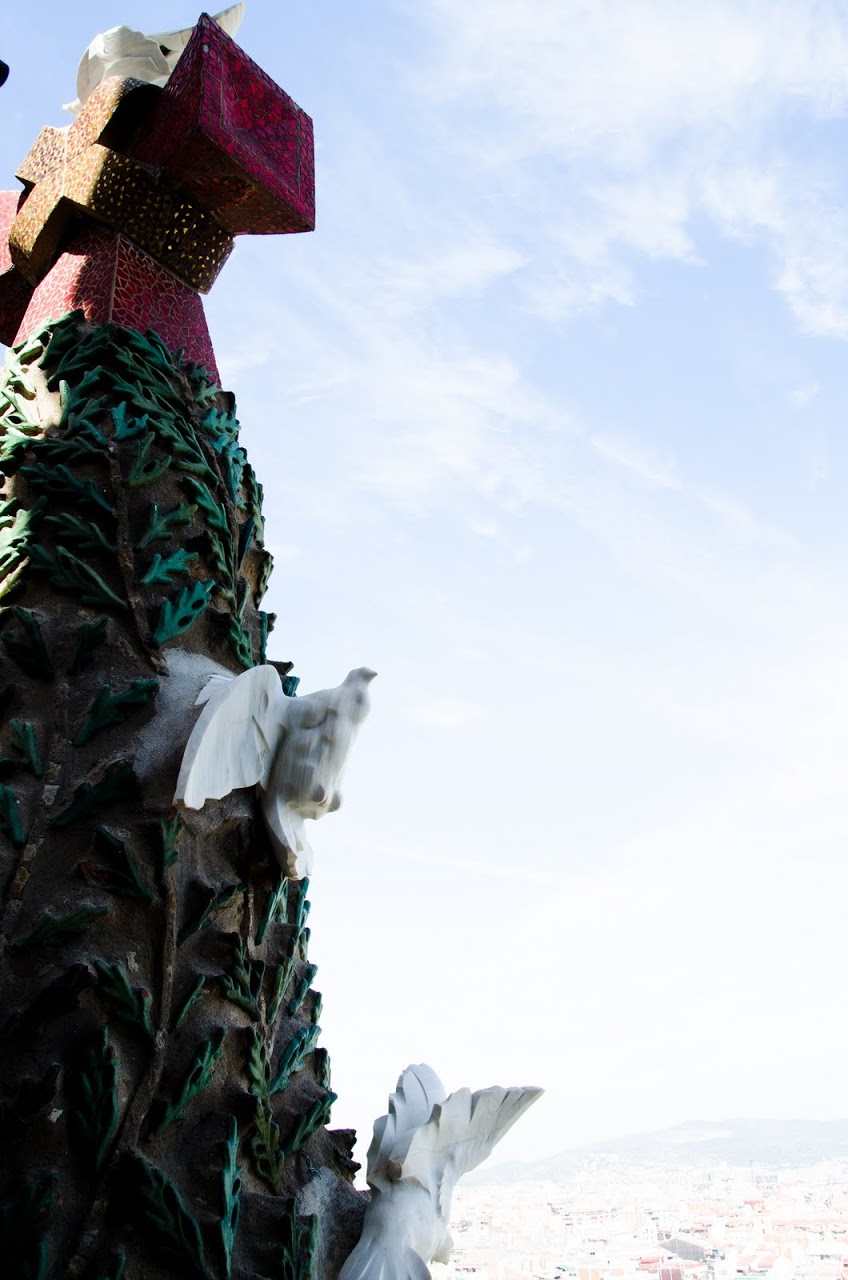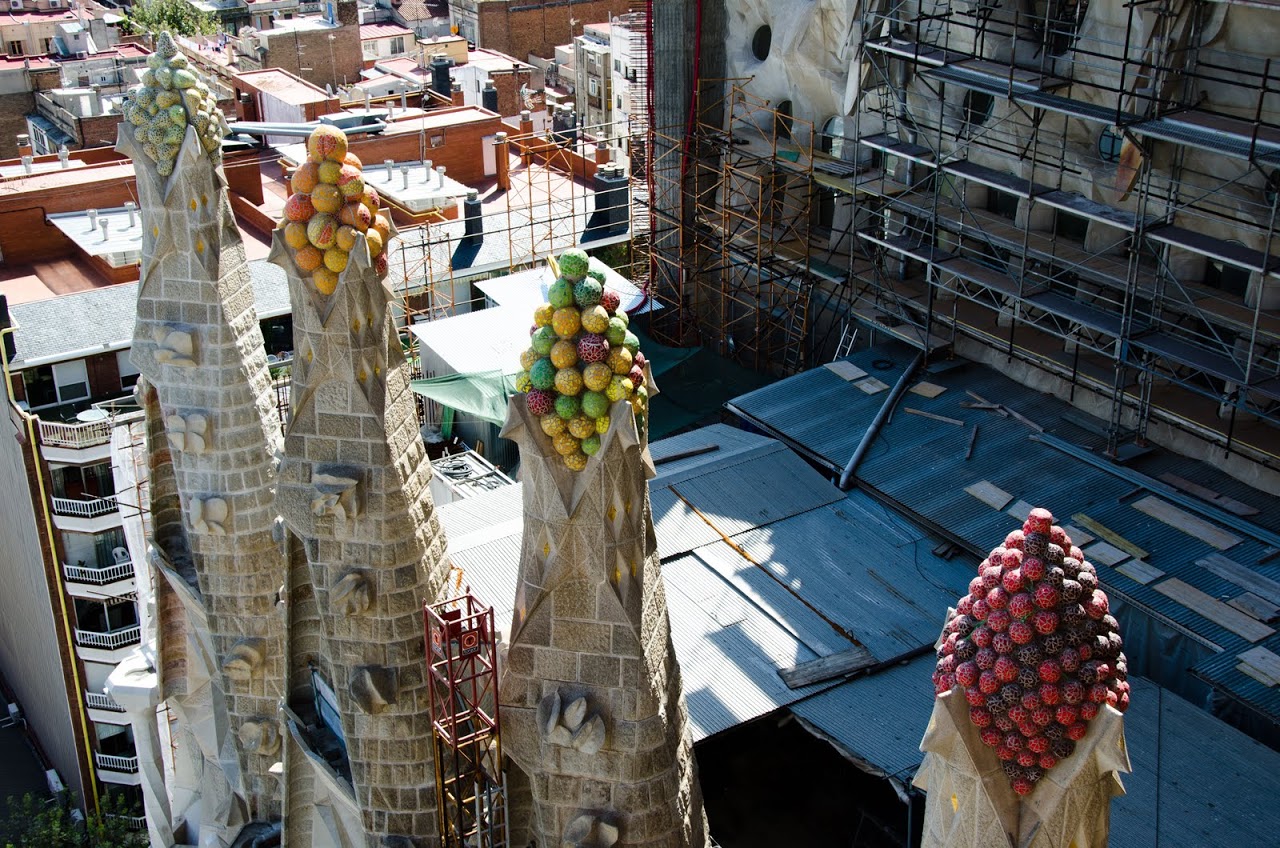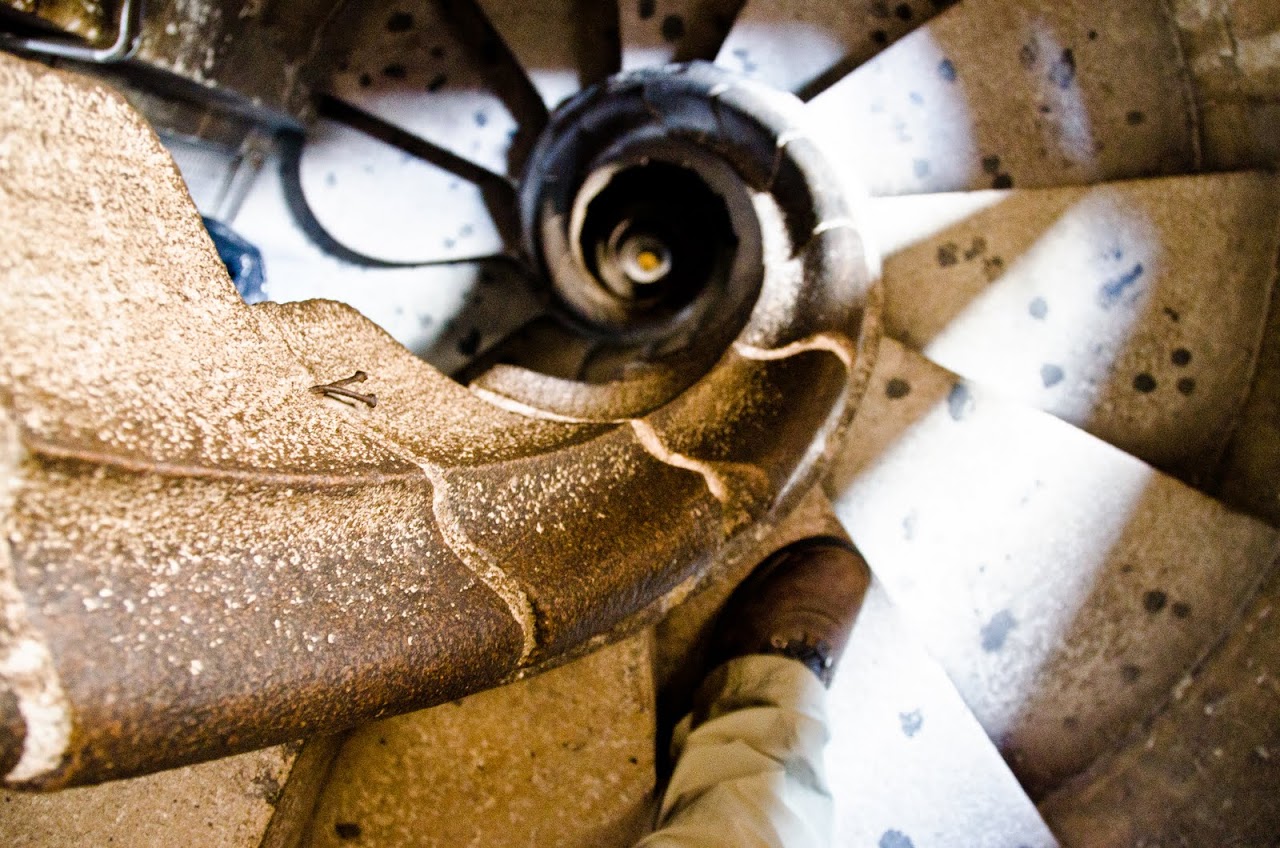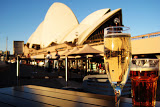View of Sagrada Familia with rest of Barcelona skyline, taken from Parc Guell
I spent many summers as a child in India. Long sweltering days turned into equally miserable nights, where sweat dripped from our foreheads to our chins under the whir of the ceiling fan that shut on and off, on and off, as the electric company instituted all too frequent power cuts. Often, we visited temples, temples whose names I can barely recall. The carved stone faces of Madurai blurred into the carved stone faces at Trichy and those at Chennai. My childhood memory converted the tens of temples into one ceaseless place of Hindu worship.
When I was in Spain in college, I experienced that same sort of fatigue. Fundamentally, all Spanish cathedrals felt alike: dark caverns with gold or brass crosses, mahogany pews, marble flooring, and paintings to shock and awe the disbeliever.

|
||
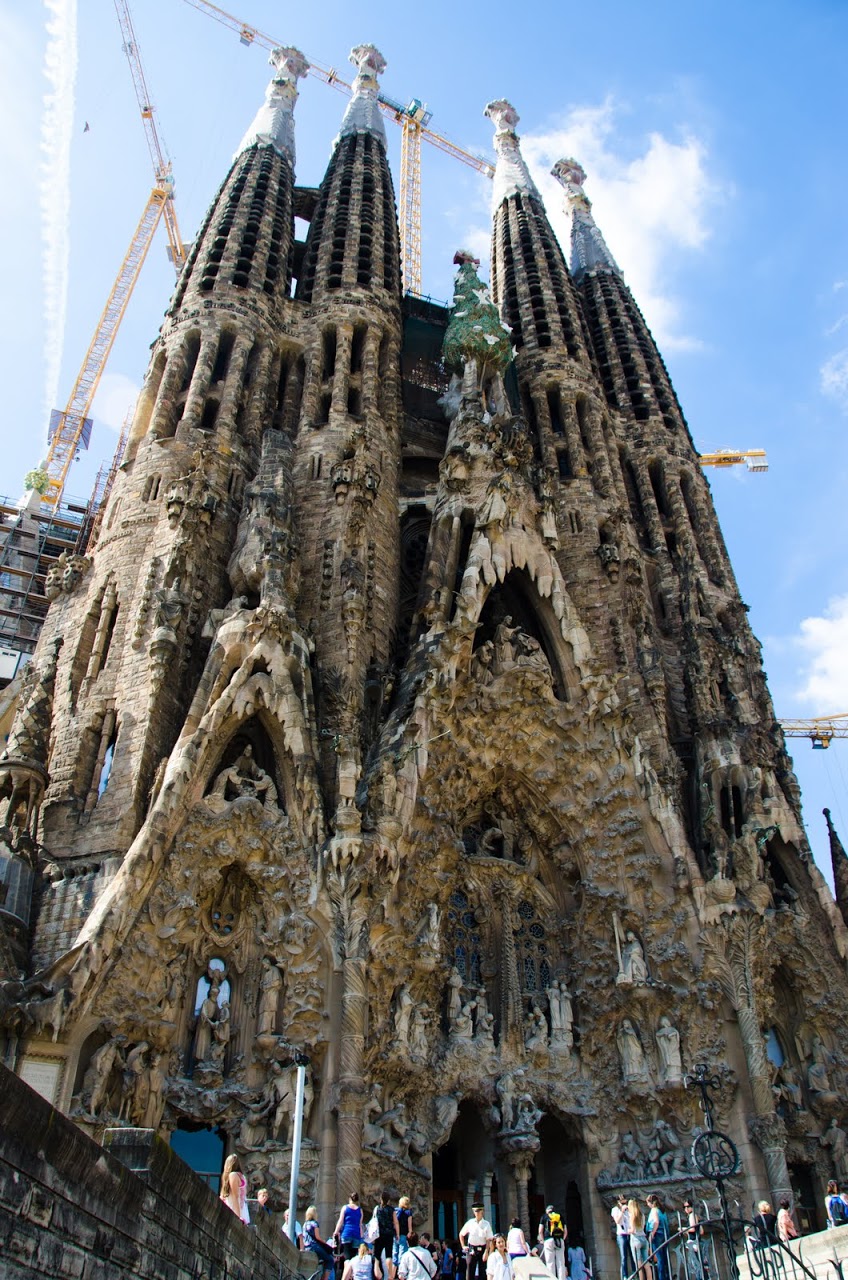
|
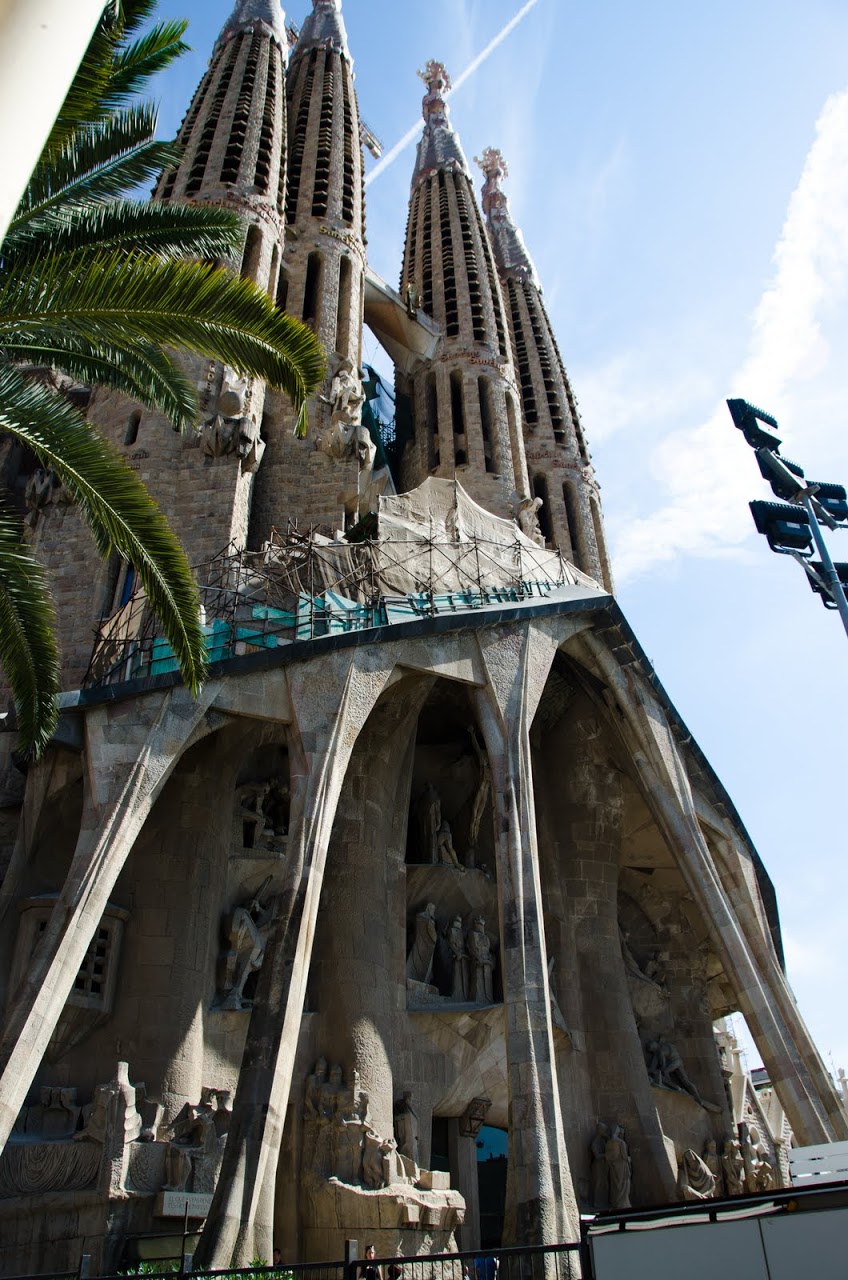
|

|
This time around, we skipped most cathedrals, opting instead to spend our time in Madrid at museums and our time in Barcelona at Gaudi's houses. But, there was one cathedral that I knew we would visit: Gaudi's Sagrada Familia.
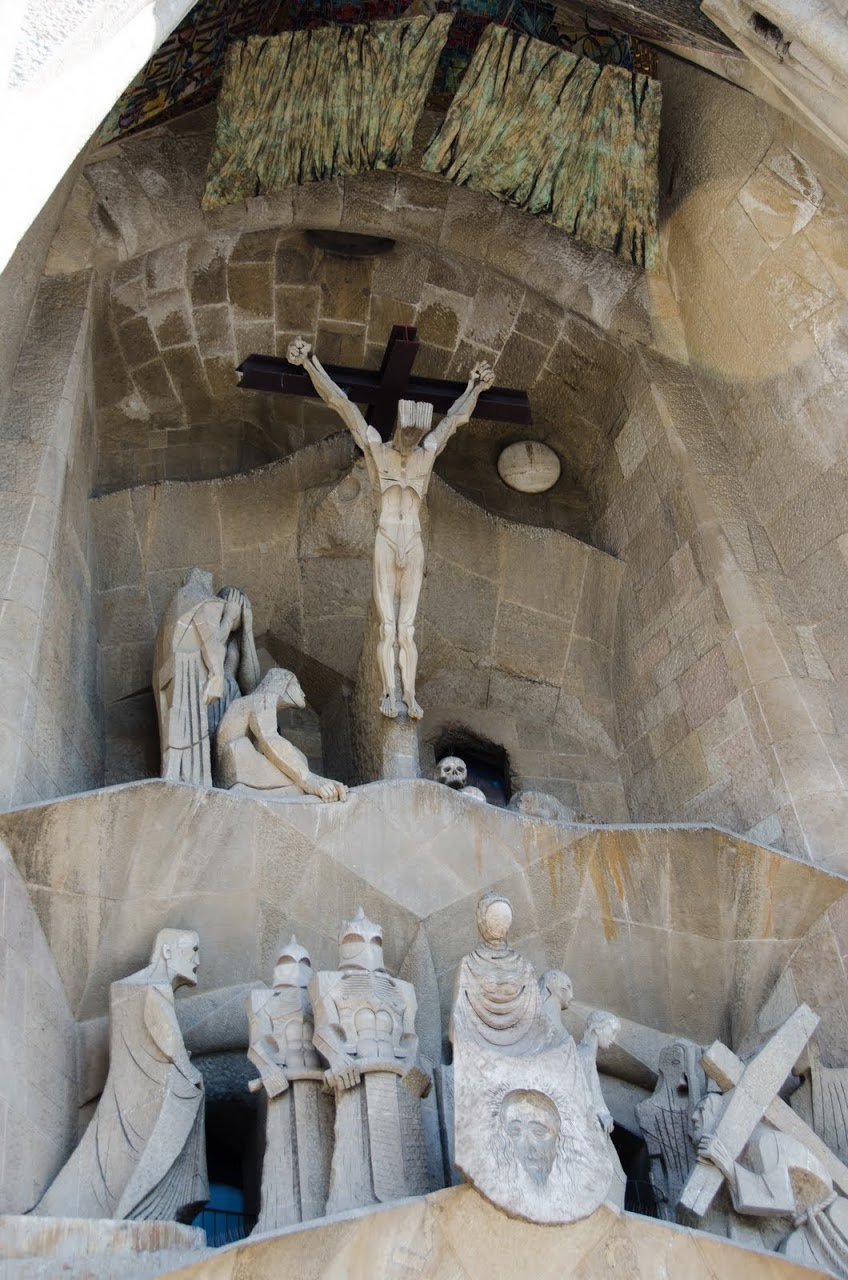
|
||
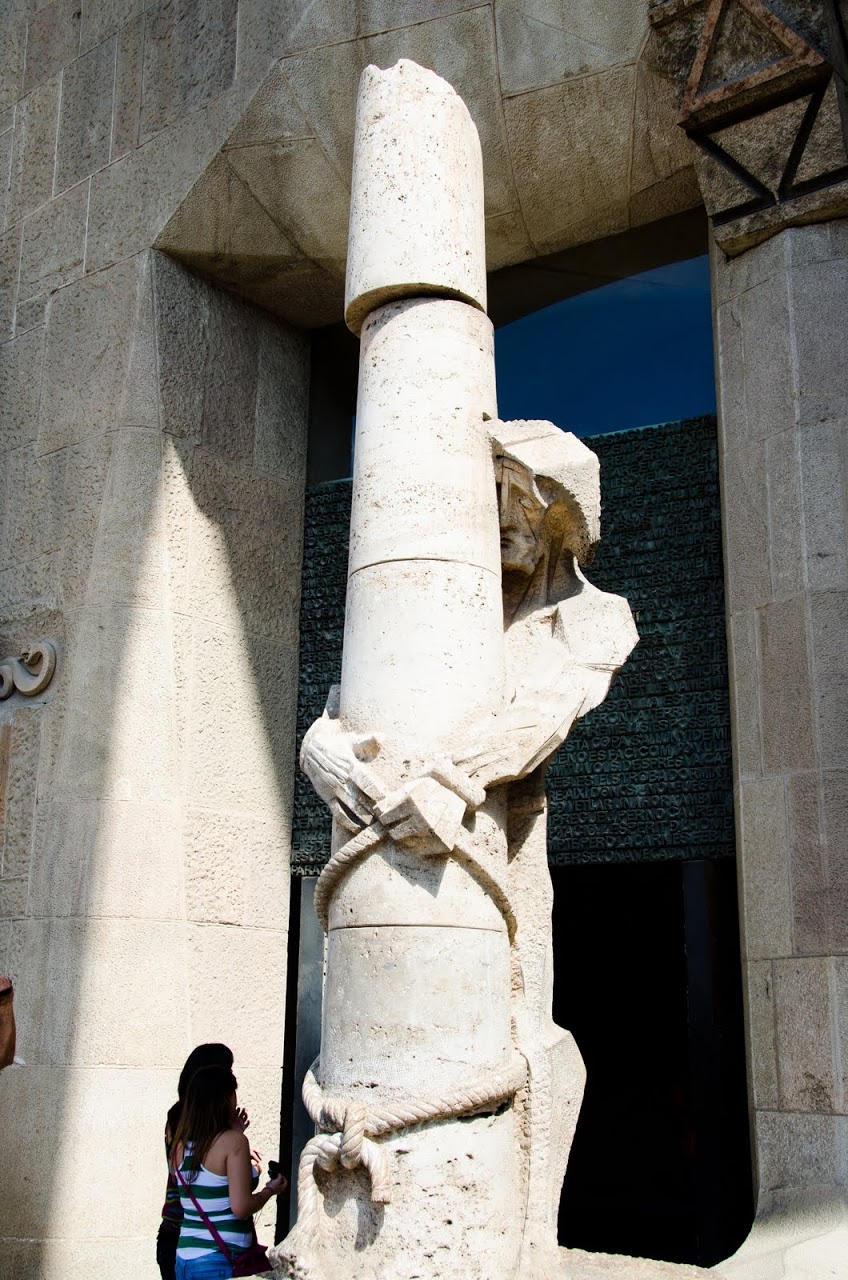
|
||
Sagrada Familia Passion facade
The Sagrada Familia dominates the Barcelona landscape, its towers jutting out in long cones with construction cranes supporting and surrounding it. From afar, it is unmistakeably a construction site, a half-built giant, waiting for over a century to be finished. But, up close, we see the details that stun.
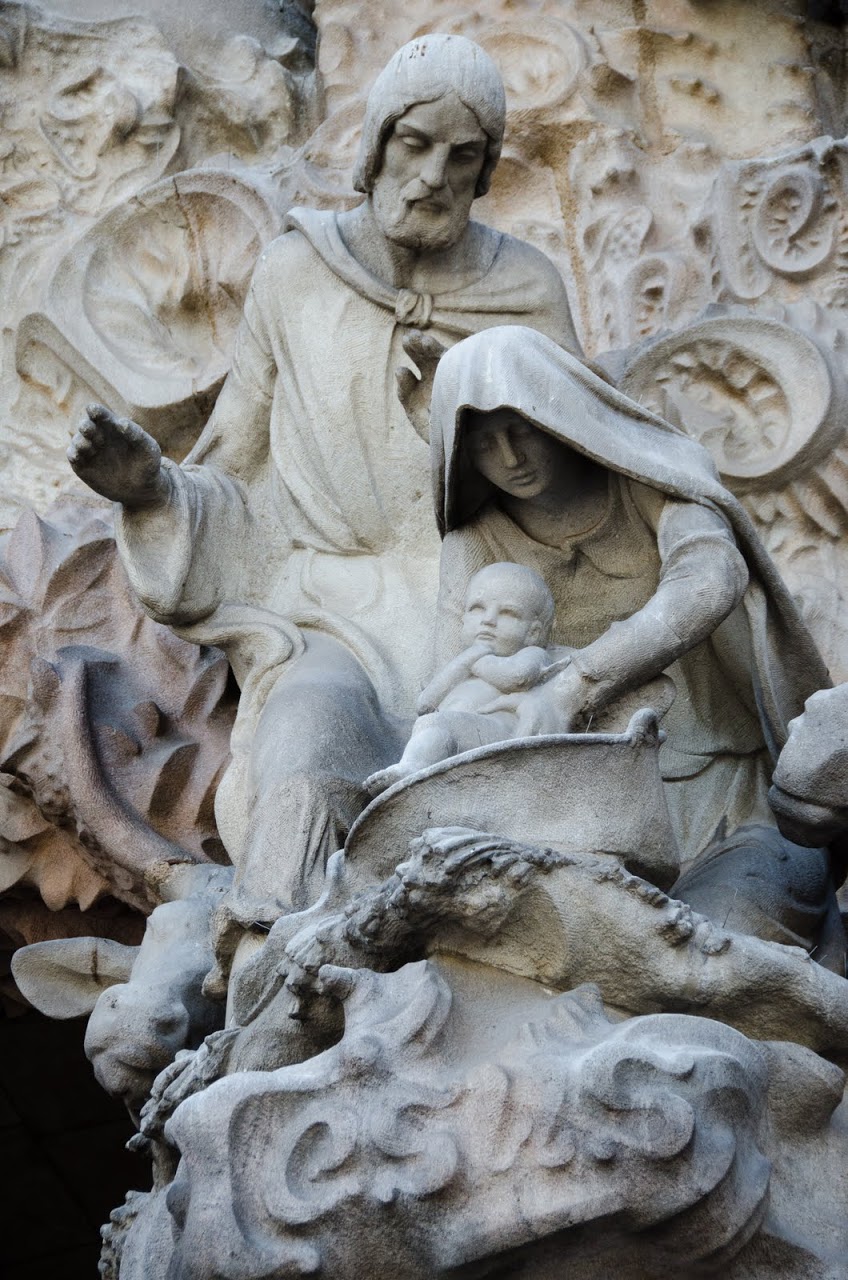
|
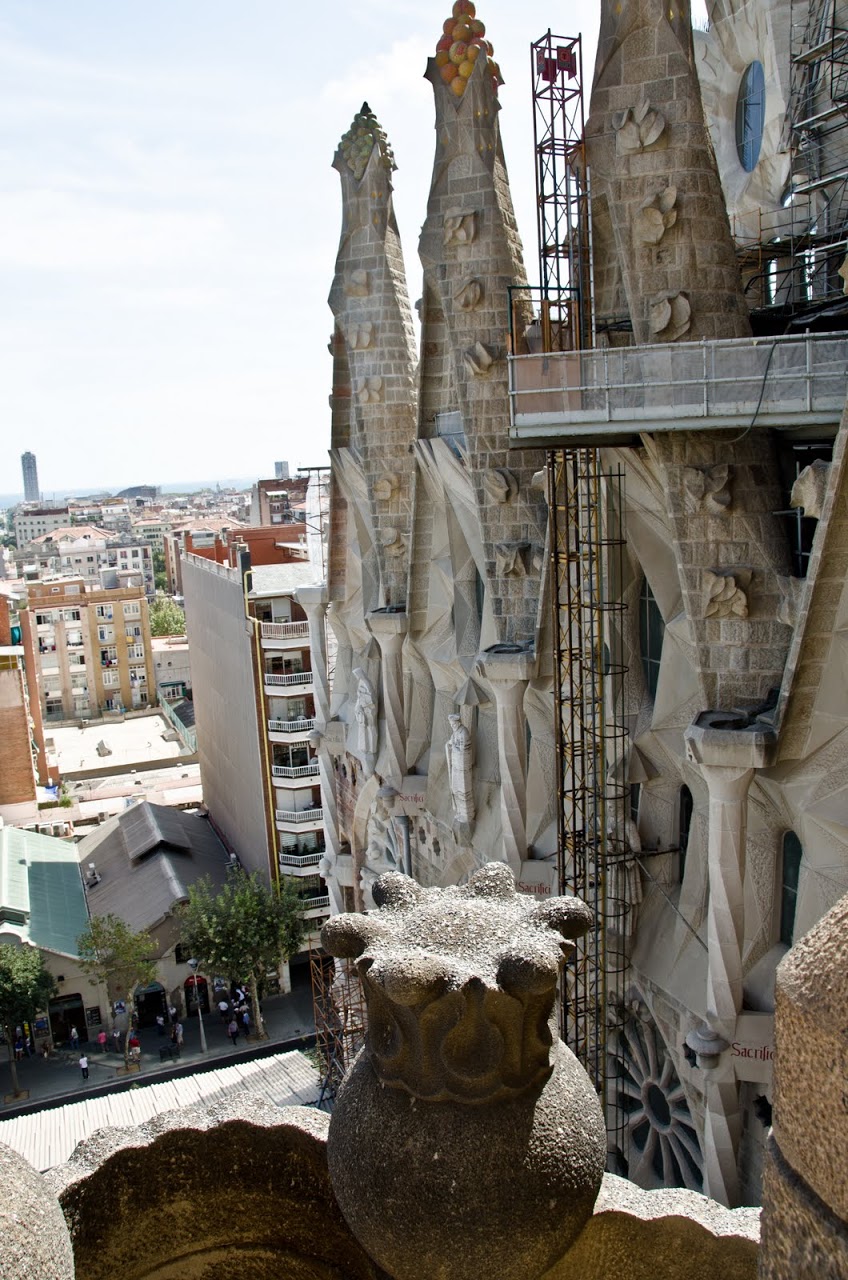
|
|

|
||
The amazing thing about religion is that it is personal; though we may follow the precepts of an organized religion, each of us is the architect of our own beliefs. And, the men (and very few women) who are hired to design buildings of worship, infuse their own opinions about religion into these vast spaces. When I enter St. Peter's Cathedral in Rome, I feel awe at the vast power of God. When I enter the Florence Duomo, I am crushed by the immensity and beauty of religion.
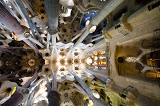
|
||
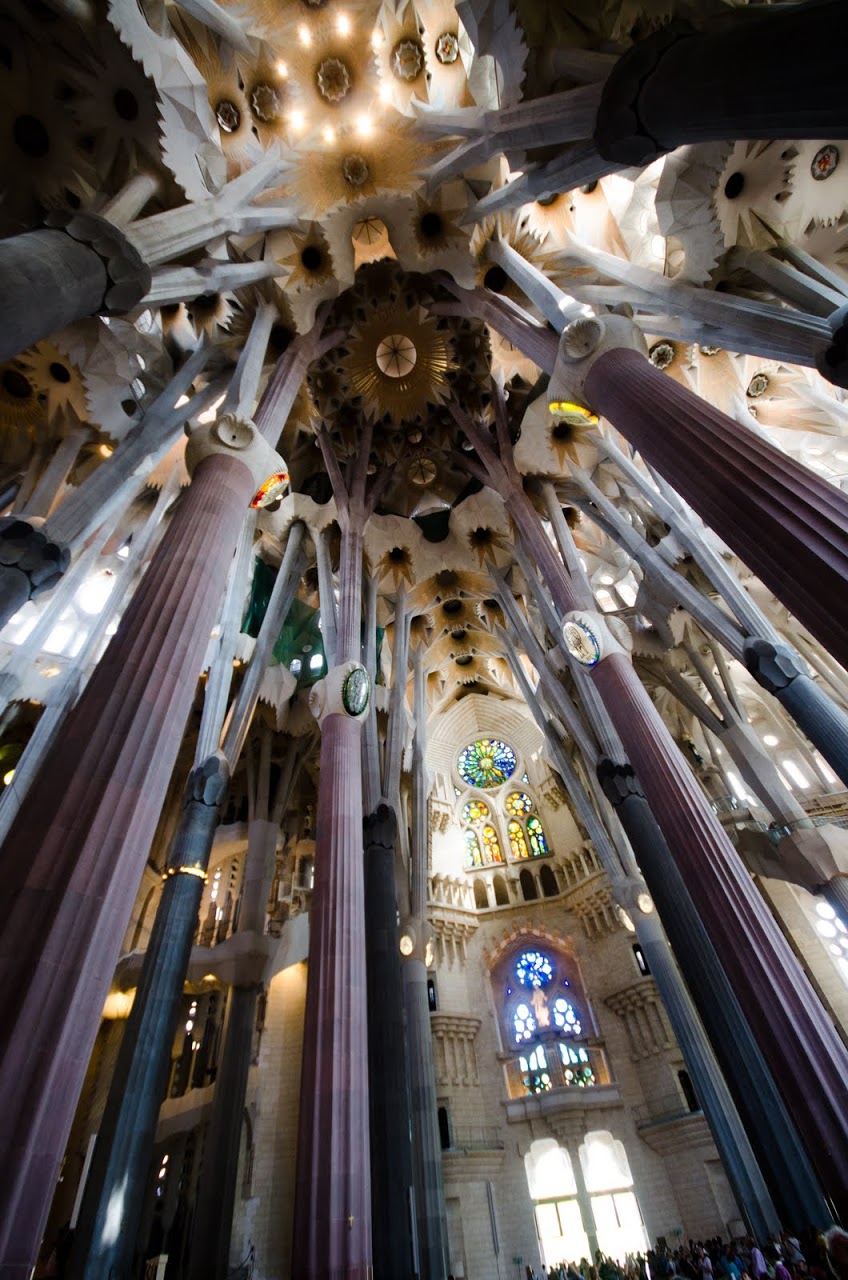
|
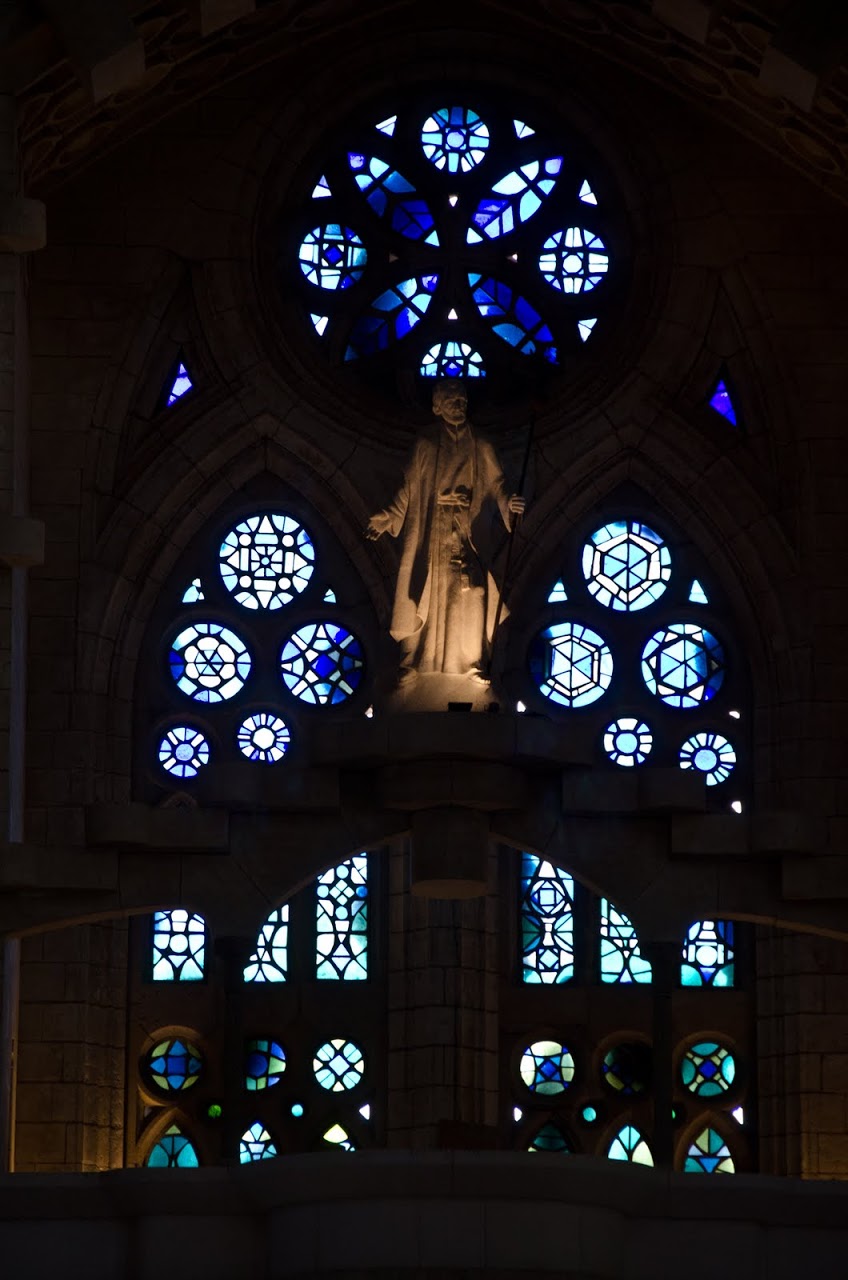
|
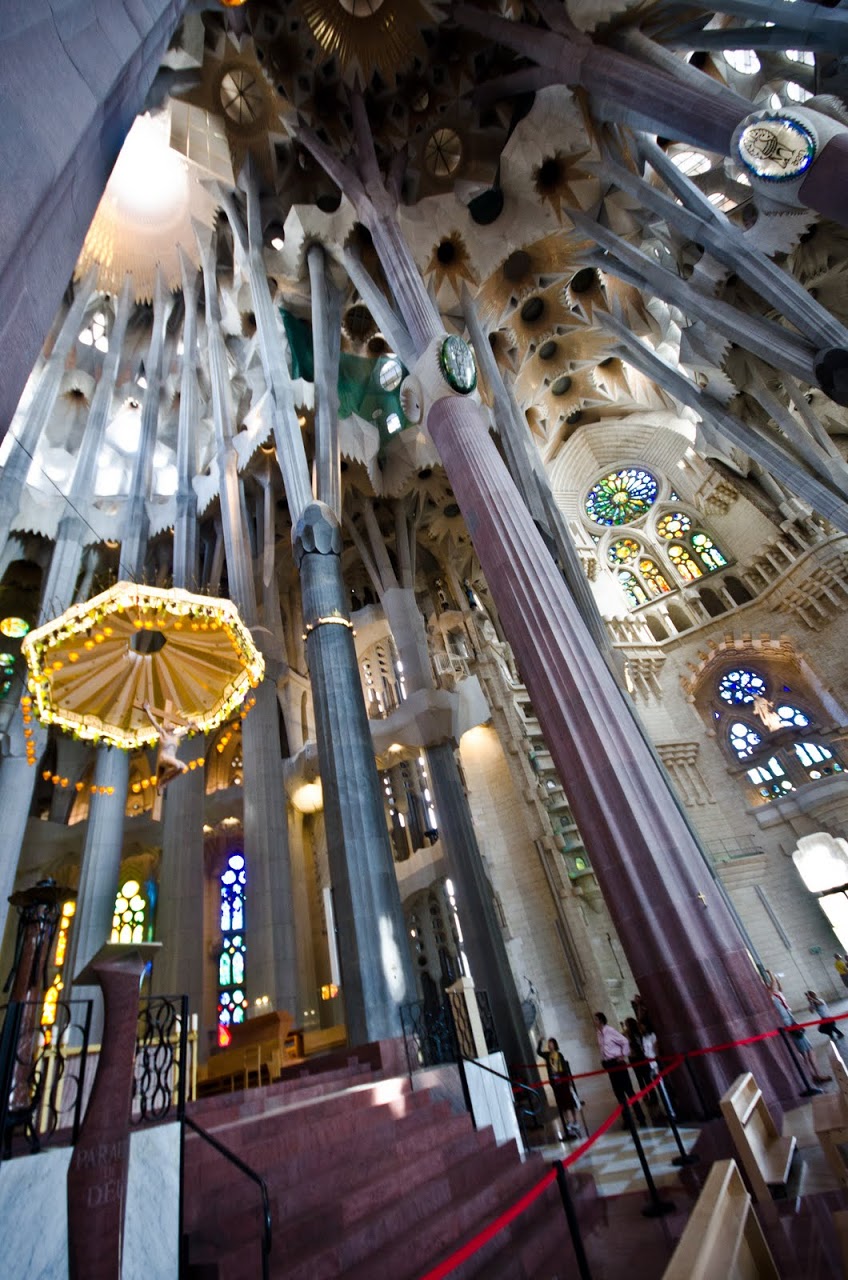
|
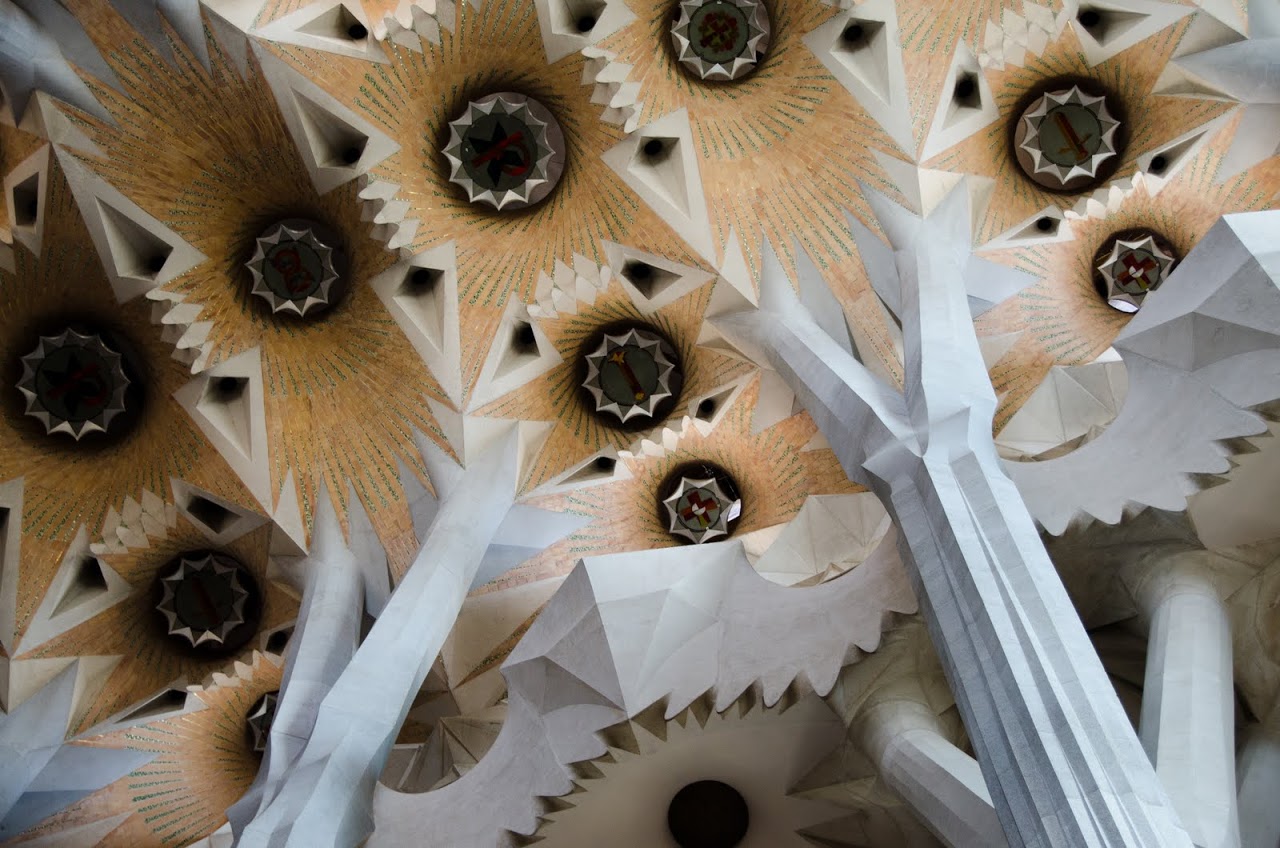
|
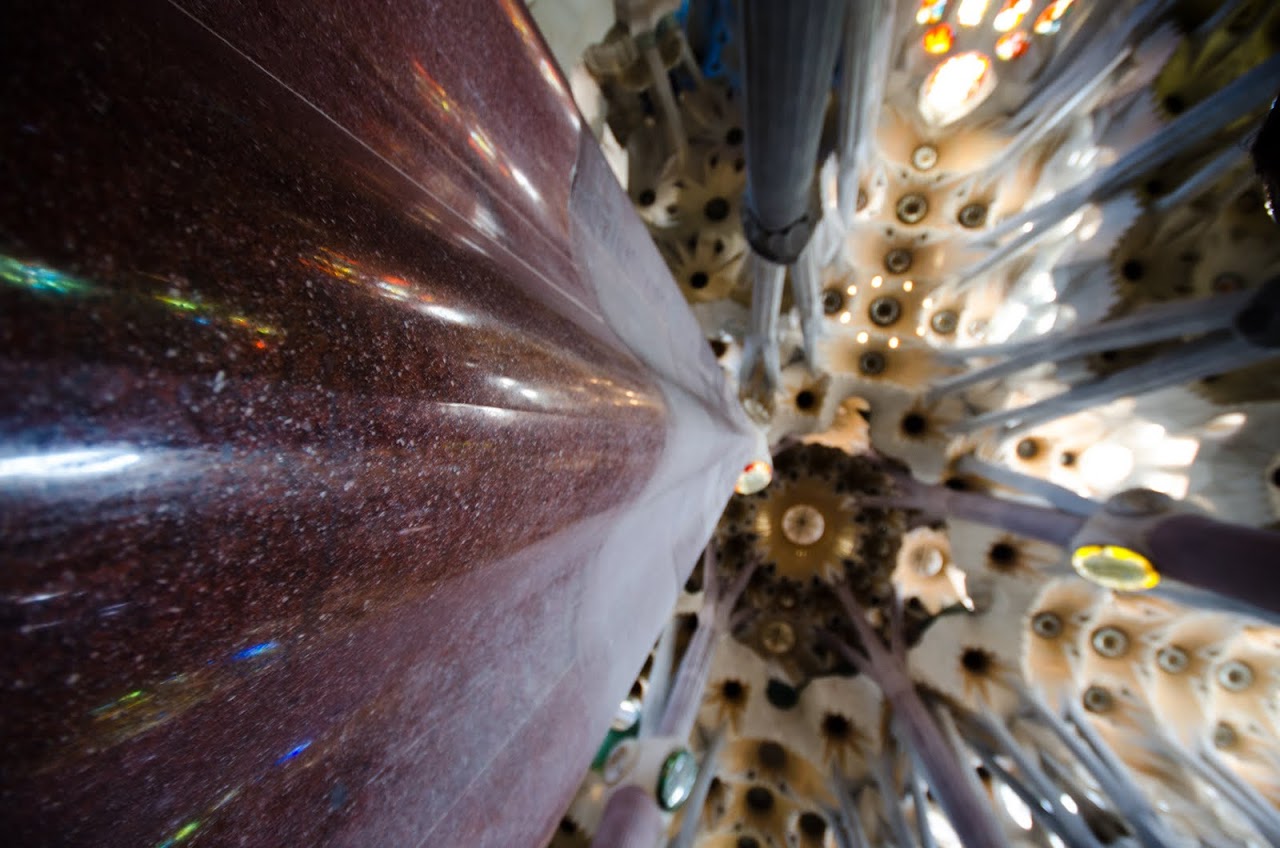
|

|
But, at the Sagrada Familia, I feel joy and gratitude. The exterior Nativity facade, representing the birth of Christ and his younger years, is lush and ornate, while the Passion facade is stark and streamlined. Gaudi designed the towering interior space to mimic natural objects, just as Casa Batllo represented the sea , because Gaudi believed that nature was God's creation and man's best teacher. The pillars in the nave resemble tree trunks with the branches spreading out to support the roof. Each window is simple cut glass in variations of one color and seashell shapes are used in the emblems to the Biblical disciples.
Interior of the Sagrada Familia
It is not only the visuals but the sound that drew me in. I left the heat of Barcelona's midday sun to enter a quiet interior, immediately soothing and soft, despite there being so many tourists inside. Catalan anarchists burned Gaudi's original plans for the cathedral during the Spanish Civil War in 1936, but research has revealed that Gaudi studied acoustics to ensure that organ and choir music were presented at their best advantage. Engineers and architects have focused on amplifying loud sounds so that they echo in the cathedral, while quiet murmurs blend together into a peaceful white noise, akin to the sound of waves breaking against the sand.
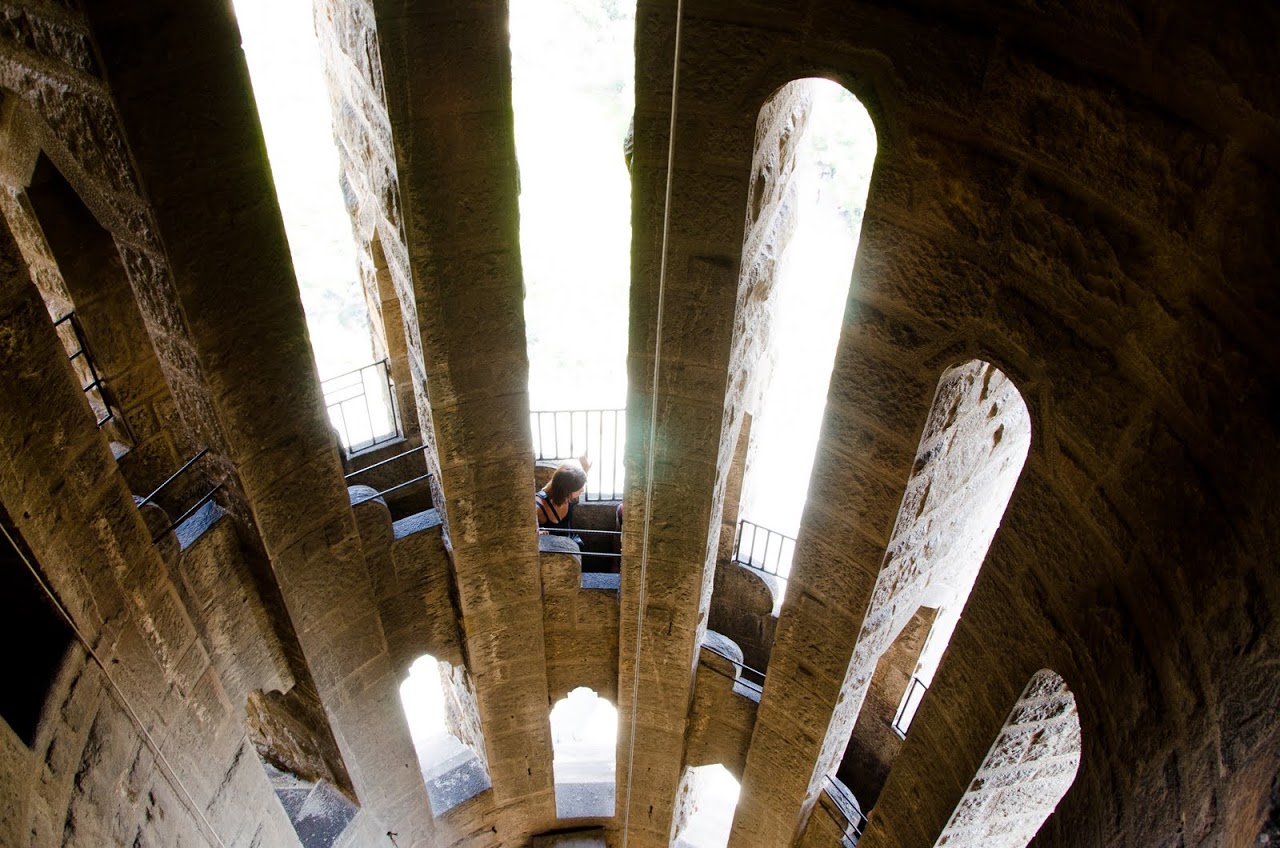
|
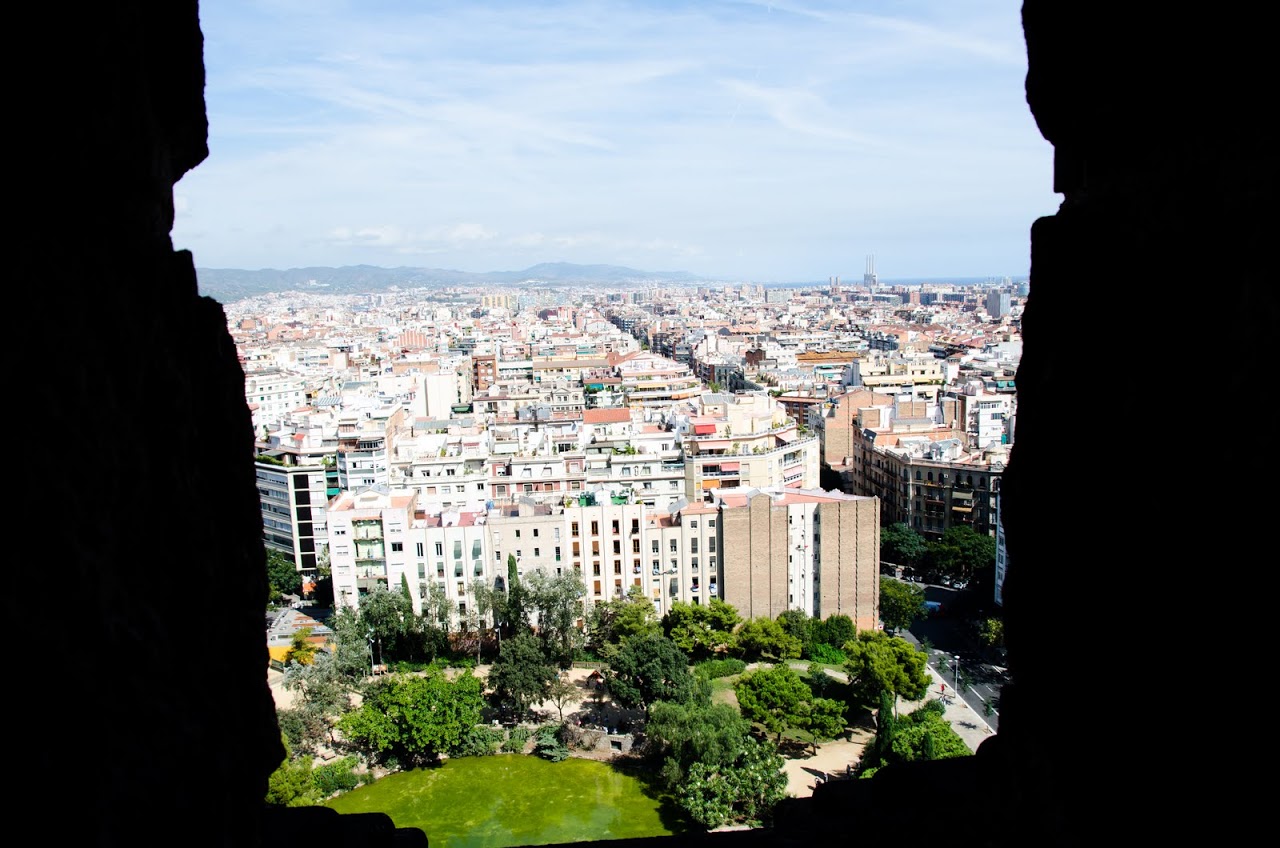
|
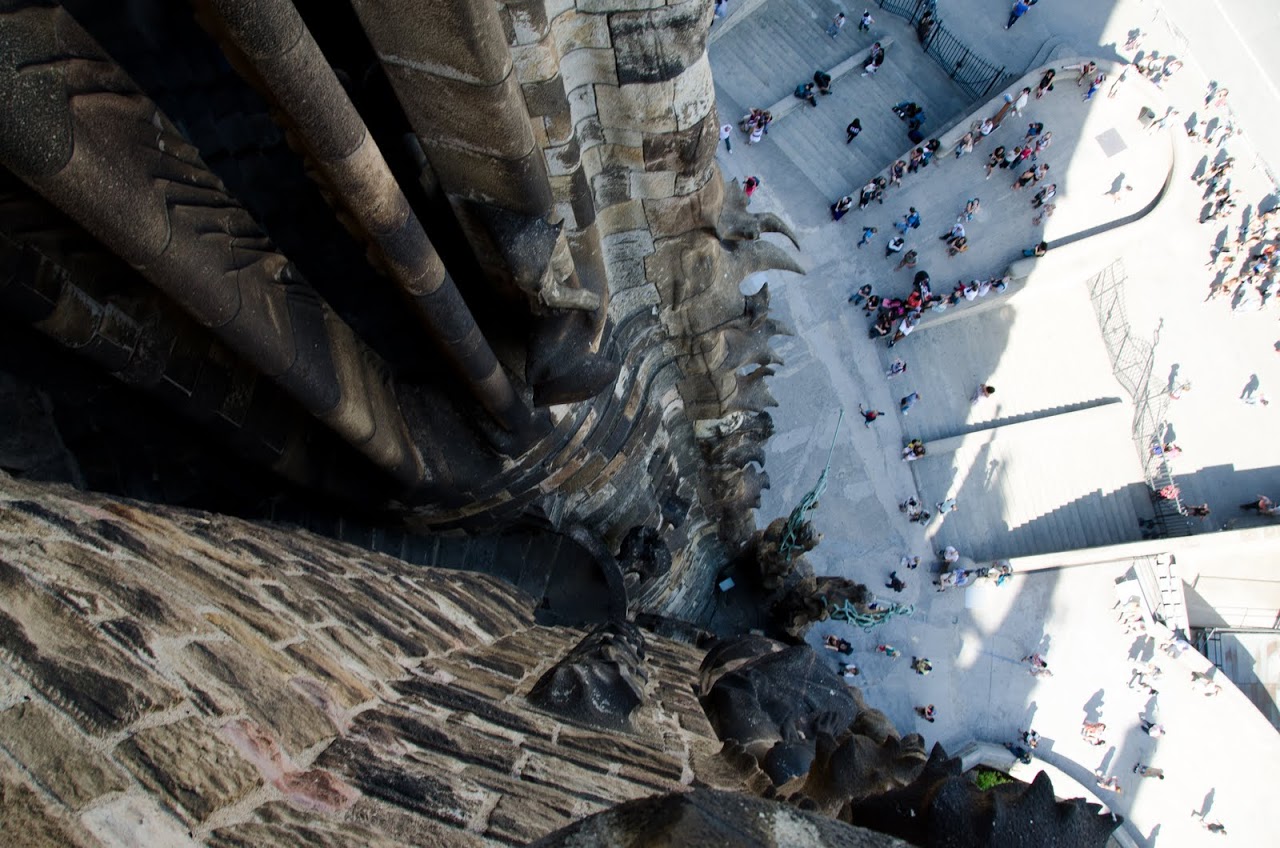
|

|
Views from the towers
The spirals in the tightly wound staircases imitate the curves of the conch shell and Gaudi chose seasonal fruits and vegetables --- berries, apples, oranges, corn, grapes, and more --- and a gigantic evergreen with doves flocking around it --- to top his creation, to remind us of nature's (and, therefore, God's) bounty.
It is a place intended to celebrate life, beauty, and nature, from a vision of religion determined over 120 years ago. It is very much Gaudi's personal cathedral though the man no longer lives.








